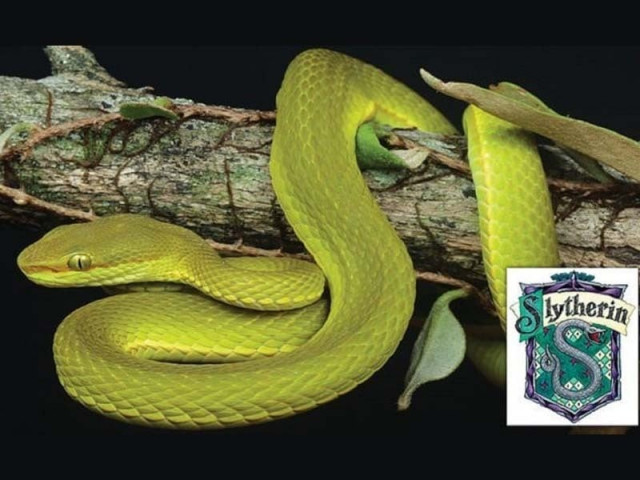Venomous snake species named after Harry Potter's Salazar Slytherin
Snake named Trimeresurus salazar after Hogwarts house founder, will be commonly known as Salazar's pit viper

A species of green pit viper snake discovered in India has been named after the character Salazar Slytherin from JK Rowling's Harry Potter series.
The green venomous snake has been named Trimeresurus salazar after the Hogwarts house founder, but will be commonly known as Salazar's pit viper.
In the Harry Potter stories Salazar Slytherin was one of the four founders of the Hogwarts School of Witchcraft and Wizardry - he founded the Slytherin house.
Males of the Salazar pit viper species have a orange-reddish stripe running along their head and more teeth than other pit vipers. Researchers from the National Centre for Biological Sciences and Bombay Natural History Society found the snake in Arunachal Pradesh in India.
Harry Potter books banished from school library due to 'real curses and spells'
Slytherin had the ability to talk to snakes - a rare skill called Parselmouth - and the symbol of his Hogwarts house was a serpent.
In the second book, Harry Potter and the Chamber of Secrets, a giant snake called the Basilisk terrorised Hogwarts students and was said to be owned by Slytherin.
The new snake is the latest in a long line of 'fantastic beasts' named after characters or objects in the Harry Potter series.
There is a sorting-hat spider and a crab called Harryplax severus.
The new Salazar's pit vipers - in the genus Trimeresurus - are charismatic venomous serpents, distributed widely across east and southeast Asia.
The species belonging to the genus are morphologically cryptic, which makes it difficult to distinguish them in the field,' according to author Zeeshan Mirza.
A morphologically cryptic refers to two or more creatures that appear to be the same but are actually different species.
'As a result, their real diversity could be underestimated,' Mirza said.
Arunachal Pradesh, where the new species was found, belongs to the Himalayan biodiversity hotspot, according to the research team.
This is already the second species discovered during an expedition to Arunachal Pradesh, said Mirza, adding that it reflects badly on existing biodiversity documentation across north-eastern India.
"Future dedicated surveys conducted across northeastern India will help document biodiversity, which is under threat from numerous development activities that include road widening, agriculture, and hydro-electric projects", he said.
The findings were published in the journal Zoosystematics and Evolution.
The article originally appeared in Mail Online



















COMMENTS
Comments are moderated and generally will be posted if they are on-topic and not abusive.
For more information, please see our Comments FAQ